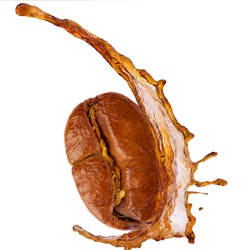2019 State of the Office Coffee Service Industry: Strong Sales And Upscale Products Fuel Continued Growth In OCS
OCS revenues continue to climb, reaching a new high of $5.71 billion, according to nearly 100 respondents of our annual State of the Office Coffee Service Industry survey (chart 1). Seventy-two percent of respondents reported an increase in the number of locations served (chart not shown), accompanied by a necessary increase in OCS staff (chart 11), showing steady growth over the previous year.
A healthy economy enables a healthy OCS industry
Nearly three-quarters of OCS providers reported an increase in sales, trending with last year’s results (chart 2). Fewer noted a decline in sales, and more said that sales remained the same. Many OCS providers said that their growth directly correlated to the health of the economy and low unemployment, and was further augmented by sales of additional services and adjusting their product mix more than in previous years. This was attributed to a variety of reasons, including the fact that consumers are more educated about coffee and demand specific products, and that premium options (like bean-to-cup brewers) are now more affordable.
Several OCS operators reported that they’re sourcing a greater variety of new products — particularly upscale and local brands — and expanding their offerings with enough options to keep clients (and their clients’ employees) happy. Several survey respondents credited growth to their strong sales force, who proactively offered additional services, enabling clients to consolidate services under one provider.
As in the previous year, the continued low unemployment rate affected the number of people served at each location, with the majority of OCS providers reporting more locations with over 20 employees, particularly in the 30 to 49, 50 to 74, and 75 to 99 range (20 percent each). It’s worth noting that only 4 percent served locations with more than 100 employees, down from 15.8 (chart 8).
Green coffee prices continue to drop
The International Coffee Organization reported that green coffee prices are at their lowest level in the past five years, dipping below 100 cents per pound (chart 3A), averaging 96 cents by August 2019. The low cost of coffee continues to offset the cost increases in other areas of OCS, such as the increasing popularity of specialty single-serve options, supporting customer requests to provide more upscale options, salary increases to retain key staff, investments in equipment and technology, and the overall high demand for quality coffee.
When asked what strategies were used to respond to rising costs, most operators said they approached this challenge through a combination of raising prices and absorbing costs, in line with last year’s results (chart 3B). One noticeable shift from last year’s survey is the number of respondents who said they’re combating rising costs by selling additional services (33.3 percent, up from 16.7 percent) and by adjusting their product mix (29.4 percent, up from 21.4 percent). Alternately, multiple respondents said they were not raising costs; instead, they’ve increased sales and gained new customers.
What's trending in OCS
Many trends are driving the continued growth of OCS, and according to our 2019 survey respondents, the most impactful of these trends is the increased desire for a variety of better quality products in the workplace. Customers want more options, and better options, and they want them at a reasonable price. Several respondents noted that their clientele are more informed than ever and are requesting specific products and brands.
Customers are asking for bean-to-cup, pantry service, local brands, darker roasts and bolder coffee; one OCS provider noted that clients are demanding more selections than their supplier offers, showing the importance of being able to source the items your clients want. Single-cup brewers continued their upward trend, capturing 24.3 percent of the equipment placed (chart 6), surpassing the 2014-15 high of 23.2 percent. While multiple respondents said customers are asking for micro markets, only half of OCS providers currently offer them, a slight increase over last year (chart not shown). For those who offer micro markets, the majority reported that they use a bean-to-cup brewer.
Having a more informed clientele means that brands are more important than ever, with more than 92 percent of respondents saying that brand is important or somewhat important to customers, up from 77.8 percent last year. As clients continue to grow more knowledgeable about different types and brands of coffee, OCS providers will need to stay on top of this trend in order to give expert advice and insight to their customers; currently, only 60 percent offer branded brewers or cups (chart not shown).
Like last year, private label remains the top-selling OCS product by volume (chart 5C), claiming the highest percentage of coffee revenue compared to national brands (value and specialty), local coffee and espresso (chart 5A). This year, respondents reported a drop in national brand/value coffee (9.8 percent, down from 19.0 percent), while local coffee brands grew in popularity (21.3 percent, up from 13.6 percent). This is likely due to customers’ requests to support local businesses.
When asked what drove changes in net coffee sales per product category from 2018 to 2019, most respondents reported that increased sales and additional accounts had the largest effect on these numbers, especially with the growing economy and the younger workforce. Survey participants also noted the shifts in customer demand, particularly for bean-to-cup, single-cup, upscale coffee, and local brands. Expanded product offerings including a wider assortment of soft drinks, additional tea assortments, snacks and pantry items also contributed to this change.
Expansion into new services
Unsurprisingly, offices remain the number-one account by type (chart 9), gaining a few percentage points over last year’s number from locations such as industrial plants, schools/universities/colleges, convenience stores and restaurants/delis/bakeries.
Like last year, coffee accounted for nearly half of sales for products offered in OCS (chart 5D). Non-coffee hot beverages experienced a slight dip from last year, as did creamers/sweeteners, soft drinks/juices, pantry service/micro kitchen and tea. Conversely, bottled water experienced the largest gain over last year, rising along with water filtration service, ice and cups/plates/paper products, exemplifying how OCS providers are further diversifying their offerings to clients. This year, more OCS providers said that they offered new services than last year (chart not shown). The most popular new service was pantry service, followed by water service and micro markets.
Last year, only 44 percent of respondents offered ice machines to their locations (chart not shown), but this year, the majority, 60 percent, of respondents now offer this service. This is likely due to the continued growth of cold brew and iced coffee beverages — 48 percent of respondents said they offered iced coffee options to their locations — which are particularly popular with millennials.
Challenges to overcome, and looking forward
This year, only 44 percent of respondents said they offered online ordering through their websites, slightly down from last year (chart 13). While this option is important to some OCS clients who appreciate the efficiency and simplicity of online ordering, it appears that many customers still prefer the human touch. That being said, technology is very important to OCS, as 60 percent of respondents are currently using industry-specific software to manage operations (chart not shown). Several respondents said they were able to add business and reduce labor overhead by streamlining billing, picking, ordering and delivery with this software.
The availability of drivers, product costs, competition and area businesses opening or closing were among the many factors that OCS providers said affected their businesses in the past year. Discount stores and retail outlets selling the same products at competitive prices are perceived as threats to OCS, as noted by some survey respondents. Some OCS providers said that the rise of very small business (fewer than 10 people) have also presented challenges to their operations, as these businesses tend to order their own coffee.
With the strong economy, educated workforce and low unemployment, better coffee is wanted and needed in the workplace. Clients are demanding a variety of high-quality products, and they’re willing to pay for them as long as they feel they’re getting good value from their OCS provider. To stay competitive, OCS providers need to establish strong relationships with their clients, source the items their clients want, and provide superior customer service.
About the Author

Abby White
Abby White previously served as chief editor for Automatic Merchandiser and VendingMarketWatch.com.
To reach the current editor of Automatic Merchandiser and VendingMarketWatch.com, email [email protected].
